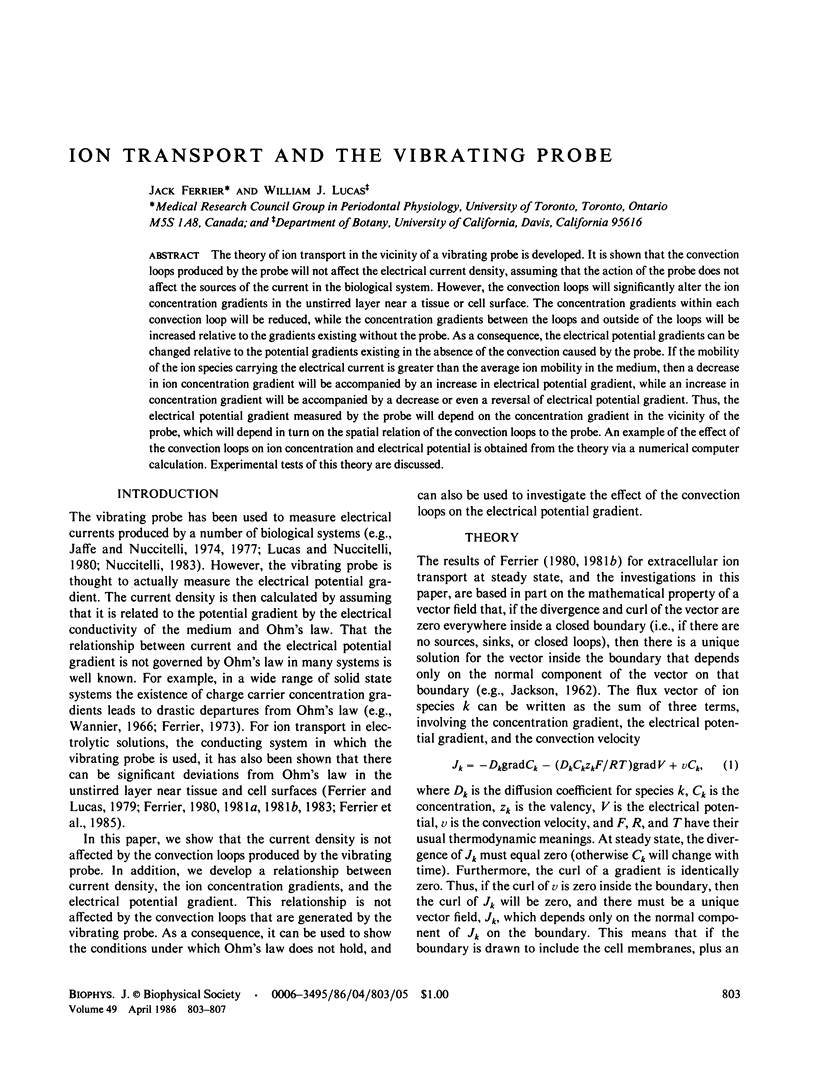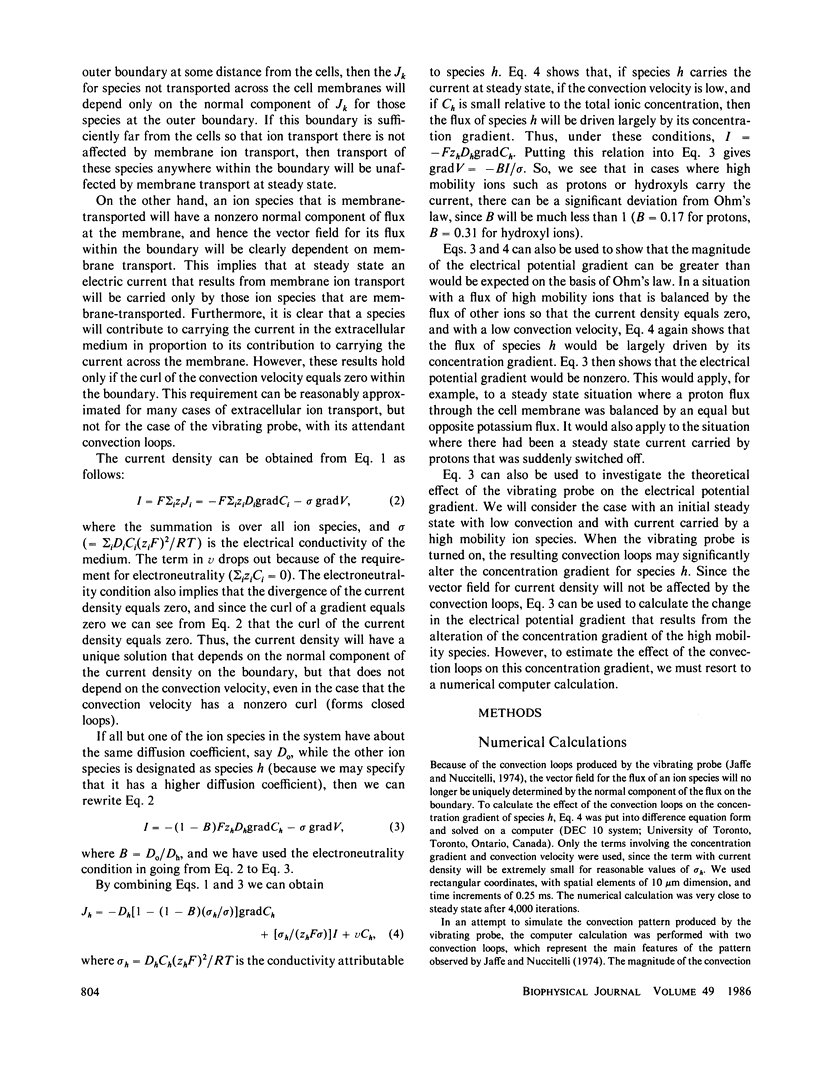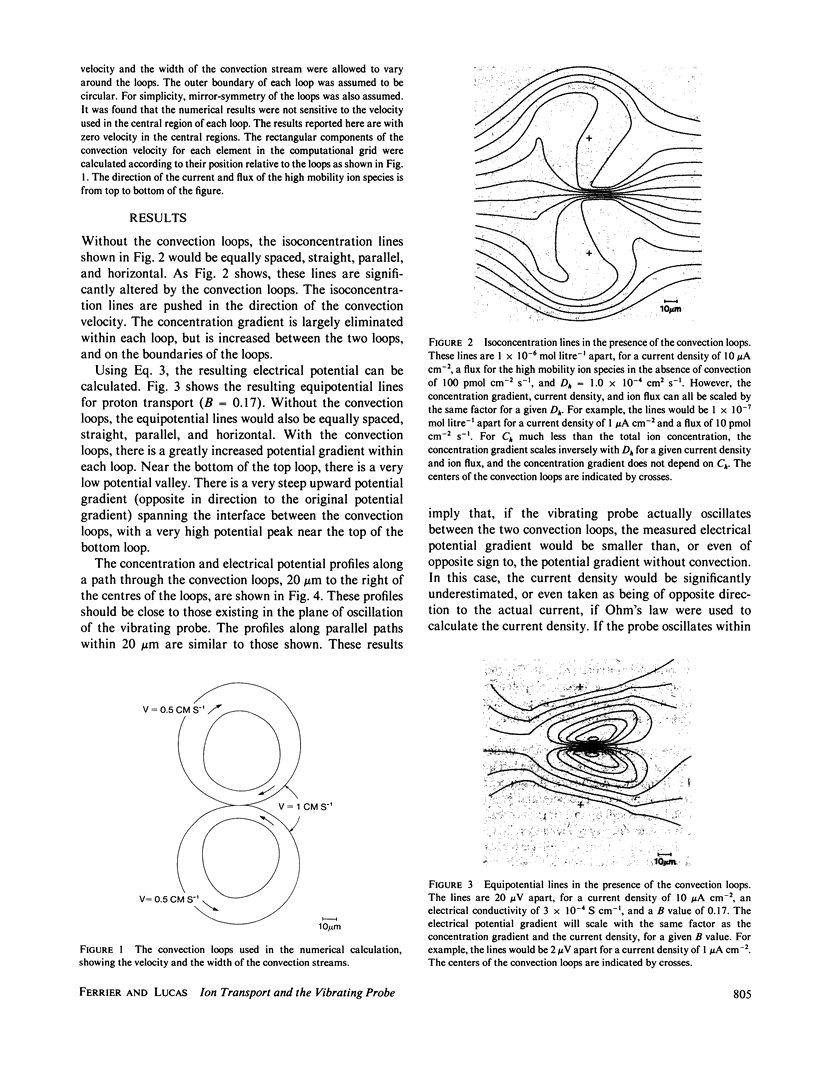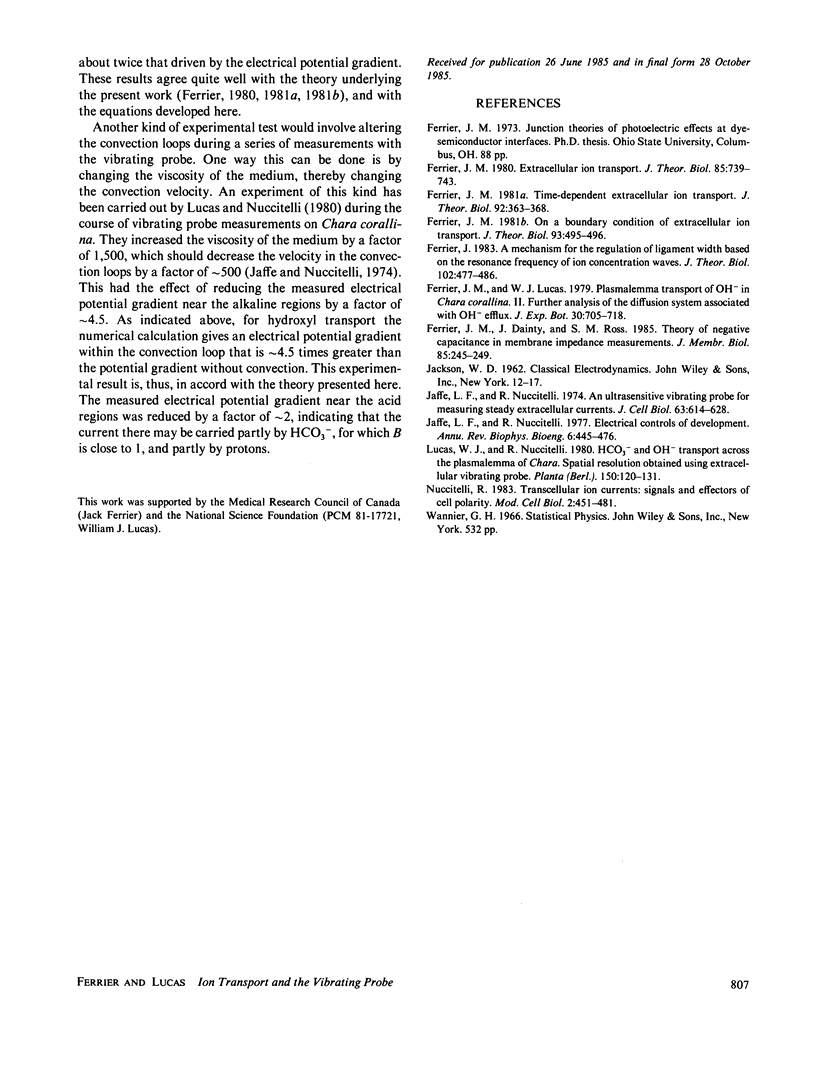Abstract
The theory of ion transport in the vicinity of a vibrating probe is developed. It is shown that the convection loops produced by the probe will not affect the electrical current density, assuming that the action of the probe does not affect the sources of the current in the biological system. However, the convection loops will significantly alter the ion concentration gradients in the unstirred layer near a tissue or cell surface. The concentration gradients within each convection loop will be reduced, while the concentration gradients between the loops and outside of the loops will be increased relative to the gradients existing without the probe. As a consequence, the electrical potential gradients can be changed relative to the potential gradients existing in the absence of the convection caused by the probe. If the mobility of the ion species carrying the electrical current is greater than the average ion mobility in the medium, then a decrease in ion concentration gradient will be accompanied by an increase in electrical potential gradient, while an increase in concentration gradient will be accompanied by a decrease or even a reversal of electrical potential gradient. Thus, the electrical potential gradient measured by the probe will depend on the concentration gradient in the vicinity of the probe, which will depend in turn on the spatial relation of the convection loops to the probe. An example of the effect of the convection loops on ion concentration and electrical potential is obtained from the theory via a numerical computer calculation. Experimental tests of this theory are discussed.
Full text
PDF




Selected References
These references are in PubMed. This may not be the complete list of references from this article.
- Ferrier J. M. Extracellular ion transport. J Theor Biol. 1980 Aug 21;85(4):739–743. doi: 10.1016/0022-5193(80)90268-4. [DOI] [PubMed] [Google Scholar]
- Ferrier J. M. On a boundary condition of extracellular ion transport. J Theor Biol. 1981 Nov 21;93(2):495–496. doi: 10.1016/0022-5193(81)90116-8. [DOI] [PubMed] [Google Scholar]
- Ferrier J. M. Time-dependent extracellular ion transport. J Theor Biol. 1981 Oct 21;92(4):363–368. doi: 10.1016/0022-5193(81)90253-8. [DOI] [PubMed] [Google Scholar]
- Ferrier J. A mechanism for the regulation of ligament width based on the resonance frequency of ion concentration waves. J Theor Biol. 1983 Jun 21;102(4):477–486. doi: 10.1016/0022-5193(83)90384-3. [DOI] [PubMed] [Google Scholar]
- Jaffe L. F., Nuccitelli R. An ultrasensitive vibrating probe for measuring steady extracellular currents. J Cell Biol. 1974 Nov;63(2 Pt 1):614–628. doi: 10.1083/jcb.63.2.614. [DOI] [PMC free article] [PubMed] [Google Scholar]
- Jaffe L. F., Nuccitelli R. Electrical controls of development. Annu Rev Biophys Bioeng. 1977;6:445–476. doi: 10.1146/annurev.bb.06.060177.002305. [DOI] [PubMed] [Google Scholar]


